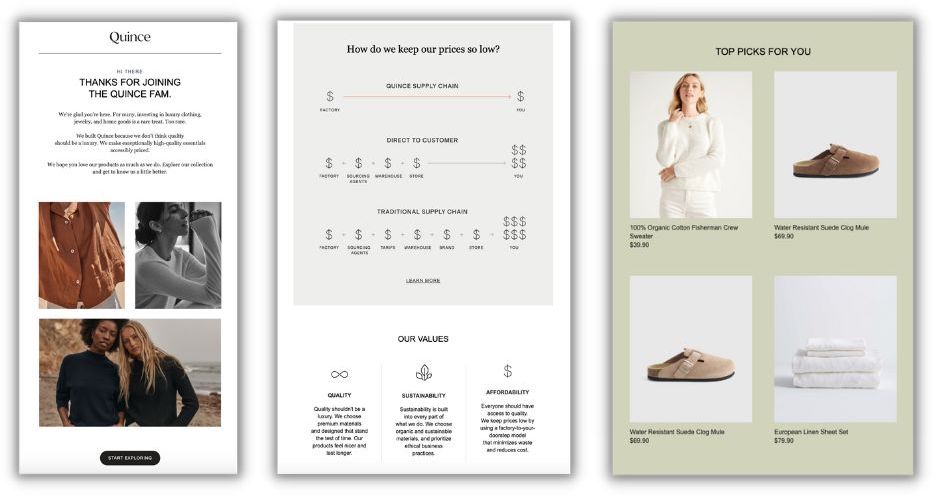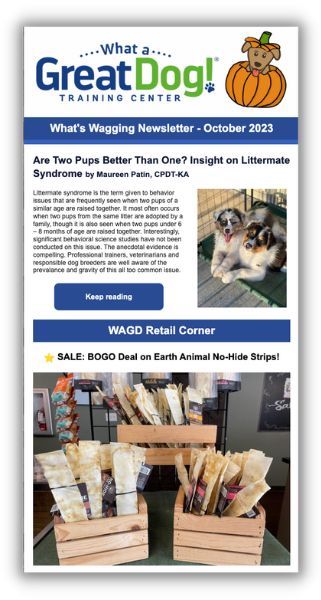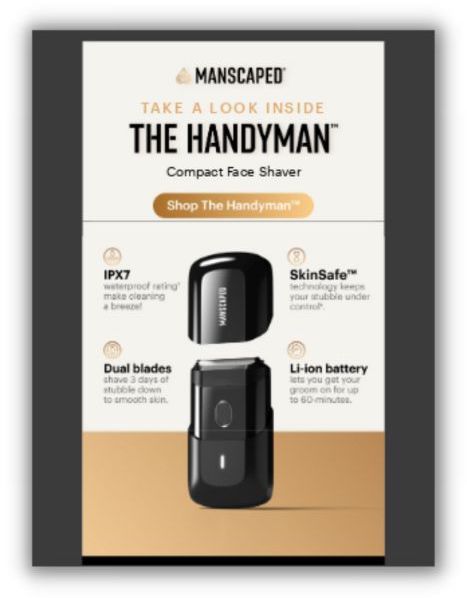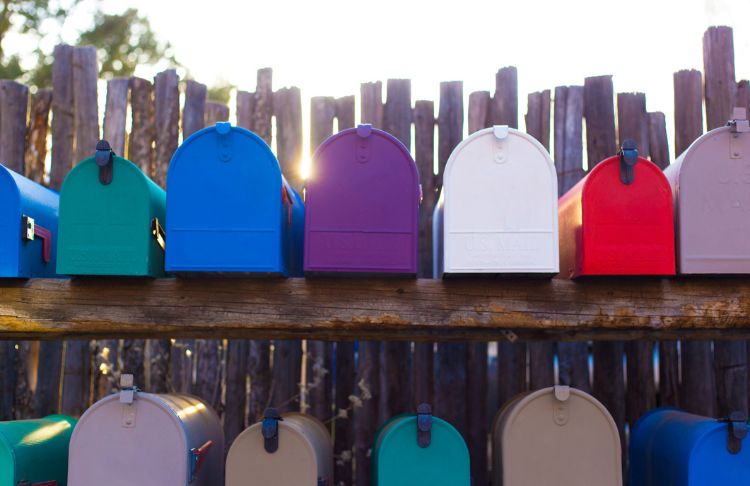As a small business owner, you’re probably always looking for new, cost-effective ways to reach your target audience and increase leads and sales. Email marketing is an excellent way to do this, but it can be challenging to decide what types of emails you should be sending for it to be successful.
That’s why we’ve rounded up the nine best types of marketing emails that are surefire wins for your business—plus templates and examples for each so you have everything you need right at the tips of your fingers!
Types of marketing emails
- Welcome emails
- Promotional emails
- Newsletter emails
- Cart abandonment emails
- Customer testimonial emails
- Product launch emails
- Re-engagement emails
- Survey or feedback request emails
- Lead nurture emails
1. Welcome emails
Welcome emails create a positive first impression, establish a connection, and set the stage for building long-term customer relationships.
They’re typically sent as soon as someone provides their email address.

To create highly engaging welcome emails, focus on the following:
- Address the recipient by their first name and tailor your content to match their preferences and interests, showing that you value their individuality.
- Clearly communicate the benefits of joining your community, such as exclusive offers, helpful resources, or access to unique content.
- Use eye-catching visuals, like images or videos, to make your welcome email visually appealing and engaging.
- Include a compelling call to action (CTA) that directs recipients to take action, whether it’s making a purchase, exploring your website, or joining your social media community.
Welcome email template
Customize this template when creating your own welcome email.
Subject line: [Name], welcome to the [business name] family!
Dear [customer’s first name],
Welcome to [Business Name]! We’re thrilled to have you join our community of fashion enthusiasts, trendsetters, and savvy shoppers.
At [Business Name], we’re not just about clothes and accessories; we’re about expressing your unique style and embracing your inner fashionista. Here’s what you can look forward to:
- Shop the Latest Trends: Discover a curated collection of the hottest fashion trends, from chic apparel to must-have accessories.
- Exclusive Offers: As a valued member of our community, you’ll get exclusive access to special discounts, early sales, and limited-time offers.
- Personalized Recommendations: We’ll tailor our product recommendations to your style preferences, so you can effortlessly find pieces that speak to you.
- Style Inspiration: Follow our blog for style tips, outfit ideas, and fashion inspiration that’ll keep you looking fabulous year-round.
To start your stylish journey, here’s a little gift from us: Use code WELCOME15 at checkout to enjoy a 15% discount on your first purchase. It’s our way of saying thank you for choosing [Business Name].
Ready to explore the world of fashion with us? Click the button below to start shopping now:
[Shop Now Button]
Got questions or need assistance? Our friendly customer support team is here to help. Just reply to this email, and we’ll be at your service.
Once again, welcome to [Business Name]. We can’t wait to be a part of your style story.
Stay fabulous!
[Business Name]
[Website URL]
[Contact Information]
P.S. Follow us on social for daily fashion updates, style inspiration, and exciting giveaways!
[Social icons linked to profiles]
2. Promotional emails
73% of marketers send out promotional emails. These emails drive sales, encourage engagement, and familiarize customers with their product offerings and value.

When creating promotional emails:
- Send specific promotions to specific segments of your database based on their past interactions with you.
- Keep the email visually appealing with a clean layout and high-quality images.
- Use concise messaging that highlights the value or benefits of your offer.
- Deliver value to the recipient through discounts, useful content, or exclusive access.
In promotional emails, you should encourage recipients to click through to your website or landing page to complete the desired action. And, your landing page must align with the email’s message and CTA.
Promotional email template
Here’s a template that you can follow (especially if you are in the education industry).
Subject line: Unlock Your Learning Potential with [Your Education Business]
Dear [Recipient’s Name],
At [Your Education Business], we’re committed to empowering your educational journey and helping you achieve your goals. Whether you’re looking to expand your skills, boost your career, or simply explore new horizons, we’ve got you covered.
📚 Explore Our Courses:
Discover a wide range of courses designed to meet your unique learning needs. From [Course Category 1] to [Course Category 2], we offer comprehensive programs that cater to various interests and career paths.
🌟 Why Choose Us:
- Experienced Instructors: Learn from industry experts who are passionate about your success.
- Flexible Learning: Access courses online, anytime, and from any device.
- Practical Knowledge: Gain skills that are immediately applicable to your personal or professional life.
🎉 Exclusive Offer:
As a valued member of our community, we’re excited to offer you an exclusive [Discount Percentage]% discount on your first course enrollment. Don’t miss this opportunity to invest in your future.
👉 Enroll Today:
[CTA Button: Enroll Now]
Ready to embark on your learning journey with us? Click the “Enroll Now” button above to start exploring our courses and take the first step toward your educational goals.
Thank you for choosing [Your Education Business] as your partner in learning. We look forward to helping you succeed.
Best regards,
[Your Name]
[Your Title]
[Your Business]
[Website]
[Contact Information]
3. Newsletter emails
Newsletters are the most popular type of marketing emails. 88% of marketers send out newsletters. They help build customer loyalty, provide valuable information, and keep the audience engaged and informed about the brand’s latest updates and offerings.

Here’s what you can do to craft informative and engaging newsletters:
- Utilize visuals like images, videos, and interactive elements to convey your newsletter’s message effectively. Visual storytelling can evoke emotions and create a memorable impact.
- Share educational, informational, or interesting content with your readers in your newsletter.
- Share exclusive content or offers with your newsletter subscribers as a token of appreciation.
Newsletter email template
Here’s a newsletter template you can use (especially if you are in healthcare):
Subject line: X tips to stay super-healthy this month
Dear [Subscriber’s First Name],
We hope this email finds you in good health and high spirits. At [Your Healthcare Business], we are committed to helping you achieve and maintain your well-being. Here’s a quick snapshot of what’s inside this month’s newsletter:
Health Tip of the Month: Discover a simple yet effective tip to boost your immunity and stay healthy this season.
Featured Article: Dive into our latest blog post, “[Article Title],” where our experts share valuable insights on [Topic].
Patient Spotlight: Meet [Patient’s Name], who has successfully transformed their health journey with our support. Their inspiring story might just motivate you!
Upcoming Events: Stay informed about upcoming health workshops, webinars, and community events. Mark your calendar for [Event Name] on [Date].
Exclusive Offer: As a valued subscriber, enjoy an exclusive [Discount/Deal] on [Product/Service]. Use promo code: [Code].
We’re here to empower you on your path to better health. If you have any questions or need personalized guidance, don’t hesitate to reach out. Your well-being is our priority.
Thank you for being a part of the [Your Healthcare Business] community. Stay healthy and stay tuned for more updates!
Best regards,
[Your Name]
[Your Title]
[Your Business]
[Contact Information]
💡 Need email subject lines inspo? We’ve got you covered: Email Subject Lines for Every Month of the Year
4. Cart abandonment emails
Cart abandonment emails are vital for small businesses as they recover potentially lost sales, remind customers of their interest, and encourage them to complete their purchase, ultimately boosting revenue.
The average clickthrough rate for cart abandonment emails is just over 8%, which means you can get eight or more people (out of one hundred) to complete their transactions just by sending them an automated email.
Let’s look at this email from Casper:

Clean, clear messaging and visuals show exactly what you left behind and how to complete the transaction. To top it off, they included a testimonial that serves as proof that others bought the product and enjoyed it. This is exactly the kind of email that would help convince reluctant customers to buy the product.
When creating and scheduling cart abandonment emails, make sure you do the following:
- Send the cart abandonment email promptly, ideally within the first hour after abandonment. Timing is crucial to re-engage potential customers while their intent is still fresh.
- Include images and details of the abandoned products in the email. This will remind customers of their initial interest.
- Provide a prominent and easy-to-spot CTA button that directs customers back to their abandoned cart. Use persuasive language, such as “Complete Your Purchase” or “Get Your Items Now,” to encourage action.
- Create a series of cart abandonment emails that go out within the hour, the next day, and the day after. Include discount codes with your second or third email to encourage users to complete their purchase.
Cart abandonment email template
Use this template for cart abandonment emails (especially if you are in online retail):
Subject line: Did You Forget Something? Your Cart Awaits!
Dear [Customer’s Name],
We noticed you left something special in your cart, and we didn’t want you to miss out! 🛍️
[Product Image]
[Product Name]
[Product Price]
Don’t let this opportunity slip away. Complete your purchase now and enjoy:
✨ [Highlight a Key Benefit]
🚚 Free Shipping on Orders Over [Threshold]
💯 Hassle-Free Returns
Click below to reclaim your items:
[CTA Button: Return to Cart]
Still, have questions or need assistance? Our friendly customer support team is here to help!
[CTA Button: Contact Us]
Thank you for considering [Your Brand Name]. We appreciate your visit, and we look forward to serving you soon.
P.S. This offer won’t last forever. Act now to secure your favorites!
5. Customer testimonial emails
Customer testimonial emails are crucial for small businesses as they build trust, provide social proof, and influence potential customers’ purchasing decisions, increasing sales and credibility.
Look at this email by Cladwell:

This testimonial email puts satisfied customers and their testimonials front and center, without distracting the user with different types of messaging and CTAs. It doesn’t try to sell you anything or make you click anywhere. This kind of email is ideal for the highly engaged segment of your email database, especially the people who have interacted with you multiple times in the recent past and who you think are ready to make a purchase.
When creating testimonial emails:
- Showcase how a specific product or service solved specific problems for past customers.
- Prioritize video testimonials over text. Video testimonials provide a personal touch, allowing potential customers to see and hear genuine expressions of satisfaction.
Customer testimonial email template
Customize this testimonial email template to build trust with your audience.
Subject line: ⭐ Discover what our customers have to say!
Dear [Customer’s First Name],
At [Your Home Services Company], we’re committed to delivering top-notch services that make your home the best it can be. But don’t just take our word for it – hear it straight from our satisfied customers!
Meet some of our happy customers:
[Customer Testimonial 1]
[Insert Customer’s Name]
“[Insert Testimonial Text]”
[Include a Relevant Image if Available]
[Customer Testimonial 2]
[Insert Customer’s Name]
“[Insert Testimonial Text]”
[Include a Relevant Image if Available]
[Customer Testimonial 3]
[Insert Customer’s Name]
“[Insert Testimonial Text]”
[Include a Relevant Image if Available]
We take pride in creating exceptional experiences, and these testimonials reflect our dedication to your satisfaction.
Ready to experience the same outstanding service? [Include a Call-to-Action Button] and let us transform your home!
Thank you for trusting [Your Home Services Company].
Warm regards,
[Your Name]
[Your Position]
[Your Company]
[Contact Information]
6. Product launch emails
Product launch emails are vital for small businesses as they create anticipation, inform loyal customers about new offerings, and drive initial sales, boosting revenue and expanding the customer base.
Let’s take a look at this product launch email from Manscaped.

This email shows you what the product is, highlights its features, and gives you a button to visit the product page and buy it on the website. It is short, visual, and action-oriented. Use the same tactics in your product launch emails and make sure that you:
- Clearly communicate the key benefits and features of the product, focusing on how it addresses customer pain points or improves their lives.
- Create a sense of urgency and exclusivity by offering a limited-time discount or promotion for early adopters, motivating recipients to take action.
- Use eye-catching images, videos, or GIFs that showcase the product from different angles or in action, helping recipients visualize its value.
Product launch email template
Use this general template for your new products.
Subject line: Exciting News: [Product Name] is Here!
Dear [Subscriber’s Name],
We are thrilled to announce the arrival of our latest innovation: [Product Name]! 🎉
[Product Name] is designed to [Briefly describe the main benefit or purpose of the product]. We’ve poured our passion and expertise into crafting something we believe will make a real difference in your [industry/niche/life].
Key Features:
- [Highlight key features or advantages]
- [Another feature or advantage]
- [One more feature or advantage]
But that’s not all! To celebrate this launch, we’re offering an exclusive [Discount Percentage] discount for our loyal customers like you. Just use the code [DISCOUNT CODE] at checkout.
Ready to experience the future of [industry/niche]? Click below to explore [Product Name] now:
[Shop Now Button]
Hurry, this special offer expires on [Expiration Date]. Don’t miss your chance to be among the first to own [Product Name].
Thank you for being part of our [Your Company Name] family. We can’t wait to hear what you think of [Product Name]!
Best Regards,
[Your Name]
[Your Position]
[Your Company]
[Contact Information]
7. Re-engagement emails
Re-engagement emails are essential for small businesses to revive dormant customer relationships, rekindle interest, and potentially win back valuable customers, ultimately maximizing the lifetime value of their clientele.
When creating re-engagement email sequences, experiment with the following:
- Inject humor into your subject line and email content to add a light-hearted touch and rekindle a sense of connection with your audience.
- Remind recipients of their past interactions with your brand and make them feel valued by offering discounts or exclusive content.
- Share a recent development with your products and services that may be of interest to the users.
Re-engagement email template
Use this general template for one of your re-engagement campaigns.
Subject Line: Let’s Catch Up!
Dear [Recipient’s Name],
We’ve missed you! At [Your Company Name], we value every connection we’ve built. We noticed you haven’t been as active as before, and we’d love to understand how we can better serve you.
Your insights matter to us. Could you spare a minute to share your thoughts? Click below to answer a quick survey:
[Survey Button]
As a token of our appreciation, here’s an exclusive [Offer/Resource] just for you:
[Offer/Resource Button]
Your feedback will help us tailor our services to your needs. If there’s anything specific you’d like to discuss or if you have questions, feel free to reach out. We’re here to assist you.
Thank you for being part of the [Your Company Name] community. We look forward to hearing from you and continuing to serve you better.
Warm regards,
[Your Name]
[Your Position]
[Your Company]
[Contact Information]
8. Survey or feedback request emails
Businesses send out survey emails to gather valuable feedback from customers, helping them understand user preferences and areas for improvement to enhance their products or services.

When sending a survey or feedback request email, make sure to include:
- What the survey is about
- How much time it would take to complete the survey
- If there’s anything in it for the recipient to participate in the survey
- How you’ll be using this information
Survey or feedback request email template
Use this template when creating a survey or feedback request email.
Subject line: We Value Your Feedback 📢 Share Your Thoughts!
Dear [Customer’s Name],
At [Your Company Name], your opinions matter to us. We’re constantly striving to improve our products/services to better meet your needs. That’s why we’d love to hear your thoughts in this brief survey.
[Survey Link]
Your feedback is crucial in helping us provide you with an even better experience. It’ll only take a few minutes of your time, and as a token of our appreciation, you’ll be entered into a drawing for a chance to win [Incentive or Prize]!
Thank you for being a valued part of our [Your Company Name] community.
Thank you,
[Your Name]
[Your Position]
[Your Company]
[Contact Information]
9. Lead nurture emails
Lead nurture emails are a series of automated or personalized emails designed to grow relationships with potential customers. Marketers use lead nurture emails to guide prospects through the sales funnel, provide relevant content, address their specific needs and pain points, and ultimately convert them into paying customers.

This landscaping company’s nurture sequence includes a welcome email, a follow up about packages, some educational emails, a customer example, and an offer.
Here are some of the best practices to follow when creating lead nurture campaigns:
- Segment your leads based on their behavior and interests, and clearly identify the triggers for these emails. For example, if someone spends more than a few minutes browsing similar products, create a nurture campaign for them.
- Include strong and clear CTAs in each email, encouraging leads to take the desired next step in their customer journey.
- Maintain consistency in your messaging and branding across all emails in the nurture campaign to create a cohesive and memorable experience for leads.
- A/B test different elements of your emails, such as subject lines, email copy, visuals, and CTAs, to identify what resonates best with your audience.
Lead nurture email templates
Here’s a template to get you started with your lead nurture email sequence.
Subject line: Dive Deeper into [Product/Service] – Exclusive Insights Await!
Hello [Lead’s Name],
We noticed your interest in our [Product/Service] offerings during your recent visit to our website, and we’re excited to share more with you.
At [Your Company], we’re committed to helping businesses like yours succeed. That’s why we’ve tailored this email series to provide you with valuable insights and personalized solutions. Here’s what’s in store for you:
Email 1: Unlocking [Product/Service] Potential
Explore the key features and benefits of our [Product/Service] that can transform your [specific industry] operations.
Email 2: Success Stories
Discover how companies similar to yours have achieved remarkable results using our [Product/Service].
Email 3: Expert Guidance
Access expert tips and strategies to maximize the potential of [Product/Service] for your business.
Email 4: Tailored Solutions
Learn how our customized solutions can address your unique challenges and help you achieve your goals.
We’re here to assist you every step of the way. If you have any questions or would like to discuss your specific needs in more detail, please feel free to reach out to us.
Thank you for considering [Your Company] as your partner in success. We’re excited to embark on this journey with you.
Best regards,
[Your Name]
[Your Position]
[Your Company]
[Contact Information]
Send the right types of marketing emails for your business
To truly harness the power of email marketing, you must learn how to measure the success of your email campaigns and continually optimize their strategies. To measure the success of your emails, track the following metrics:
- Open rate. Open rate is the percentage of recipients who opened your email, providing insight into how engaging your subject line and sender name are.
- Click-through rate (CTR). Click-through rate measures the percentage of email recipients who clicked on one or more links contained within your email, indicating the effectiveness of your email content and call-to-action.
- Conversion rate. Conversion rate represents the percentage of email recipients who took the desired action after clicking a link within your email, such as making a purchase or signing up for a newsletter.
- Unsubscribe rate. Unsubscribe rate is the percentage of recipients who opted out of your email list, reflecting the level of disinterest or dissatisfaction among your subscribers.
If your metrics are below industry benchmarks, set up some A/B tests. Try different subject lines, content, and visuals to improve your metrics. Optimization isn’t a one-time task, it’s an ongoing process that can help you get the highest ROI on your email marketing efforts.
With a strong foundation in measuring, interpreting, and optimizing email marketing efforts, you can ensure that every email you send is the right type of marketing email for your business.






